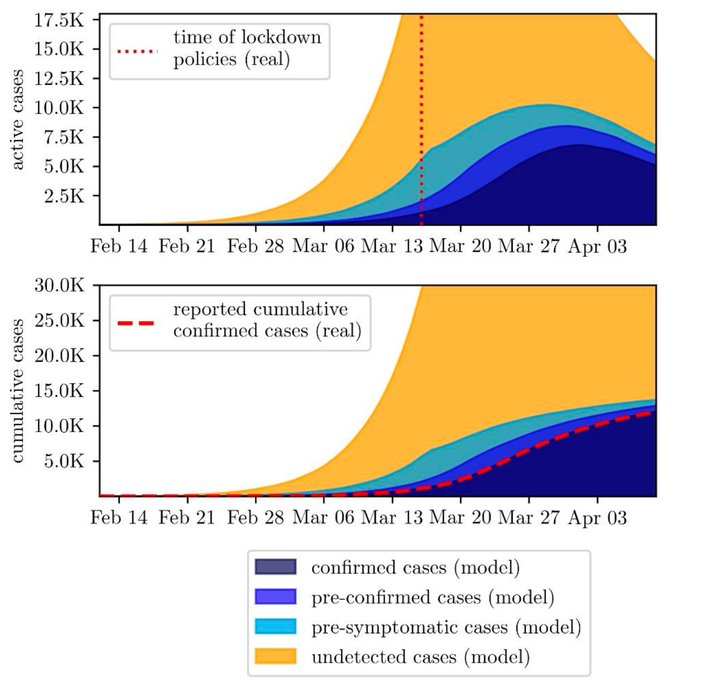Evaluation of Contact-Tracing Policies Against the Spread of SARS- CoV-2 in Austria– An Agent-Based Simulation
 Comparison of the initial phase and reported data from Austria. Upper plot shows active cases while the lower plot displays cumulative.
Comparison of the initial phase and reported data from Austria. Upper plot shows active cases while the lower plot displays cumulative.Abstract
Background: Many countries have already gone through several infection waves and mostly managed to successfully stop the exponential spread of SARS-CoV-2 through bundles of restrictive measures. Still, the danger of further waves of infections is omnipresent and it is apparent that every containment policy must be carefully evaluated and possibly replaced by a different, less restrictive policy, before it can be lifted. Tracing of contacts and consequential breaking of infection chains is a promising strategy to help containing the disease, although its precise impact on the epidemic is unknown. Objective: In this work we aim to quantify the impact of tracing on the containment of the disease and investigate the dynamic effects involved. Design: We developed an agent-based model that validly depicts the spread of the disease and allows for exploratory analysis of containment policies. We apply this model to quantify the impact of divverent variants of contact tracing in Austria and to derive general conclusions on contract tracing. Results: The study displays that strict tracing can supplement up to 5% reduction of infectivity and that household quarantine comes at the smallest price regarding preventively quarantined people. Limitations: The results are limited by the validity of the modeling assumptions, model parameter estimates, and the quality of the parametrization data. Conclusions: The study shows that tracing is indeed an efficient measure to keep case numbers low but comes at a high price if the disease is not well contained. Therefore, contact tracing must be executed strictly and adherence within the population must be held up to prevent uncontrolled outbreaks of the disease.